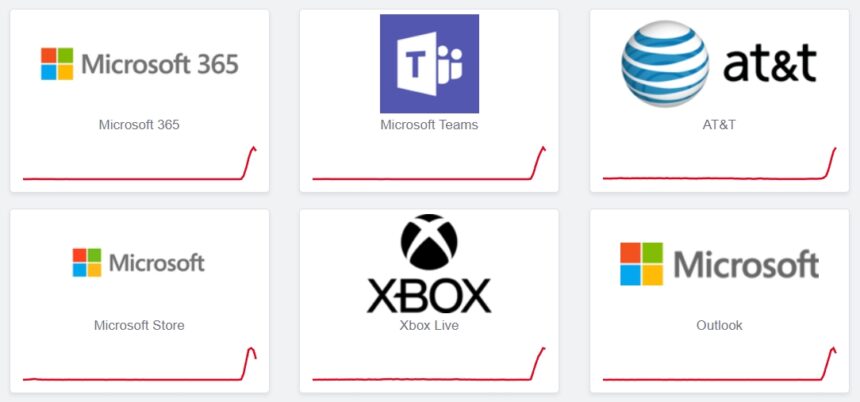Early Thursday morning, Microsoft customers experienced widespread service disruptions when an outage hit AT&T’s network, affecting users across multiple U.S. states. The issue prevented thousands of people from accessing Microsoft services such as Microsoft 365, Outlook, Azure, and Xbox Live, among others.
What’s Happening & Why This Matters
Microsoft began investigating reports of customers having trouble connecting to their services via AT&T networks. Around 9:00 a.m. ET, Microsoft’s Azure support account acknowledged the issue, stating that they were looking into the situation. Shortly afterward, Microsoft’s 365 social media account clarified that the outage was caused by a change in a third-party ISP’s managed environment. This change was promptly reverted, and Microsoft began to see signs of recovery.

The problem affected thousands of users. According to Downdetector, Microsoft 365 received over 23,000 outage reports, while nearly 5,000 users reported issues with Microsoft Teams. Users also experienced connection difficulties with the Microsoft Store and Xbox Live. AT&T customers reported problems across several states, including Florida, Ohio, Texas, Alabama, Connecticut, and Mississippi. Many users suggested that AT&T’s fiber internet service was primarily at fault, noting that Microsoft services continued to work on other networks like Starlink, T-Mobile, and Verizon.
AT&T responded by confirming the issue had been resolved and that all connections were back to normal. The company indicated that there was no foul play involved in the disruption. The problem appeared to peak around 8:00 a.m., and by 11:00 a.m., Microsoft confirmed that the services had been fully restored.
TF Summary: What’s Next
The latest outage between AT&T and Microsoft highlights the vulnerabilities in relying on a single service provider for internet connectivity. While both companies resolved the issue swiftly, the incident has sparked conversations about the resilience of digital infrastructure and the importance of redundancy in critical online services. Future developments may include improved coordination between ISPs and tech giants to prevent similar disruptions and ensure seamless user experiences.
— Text-to-Speech (TTS) provided by gspeech


